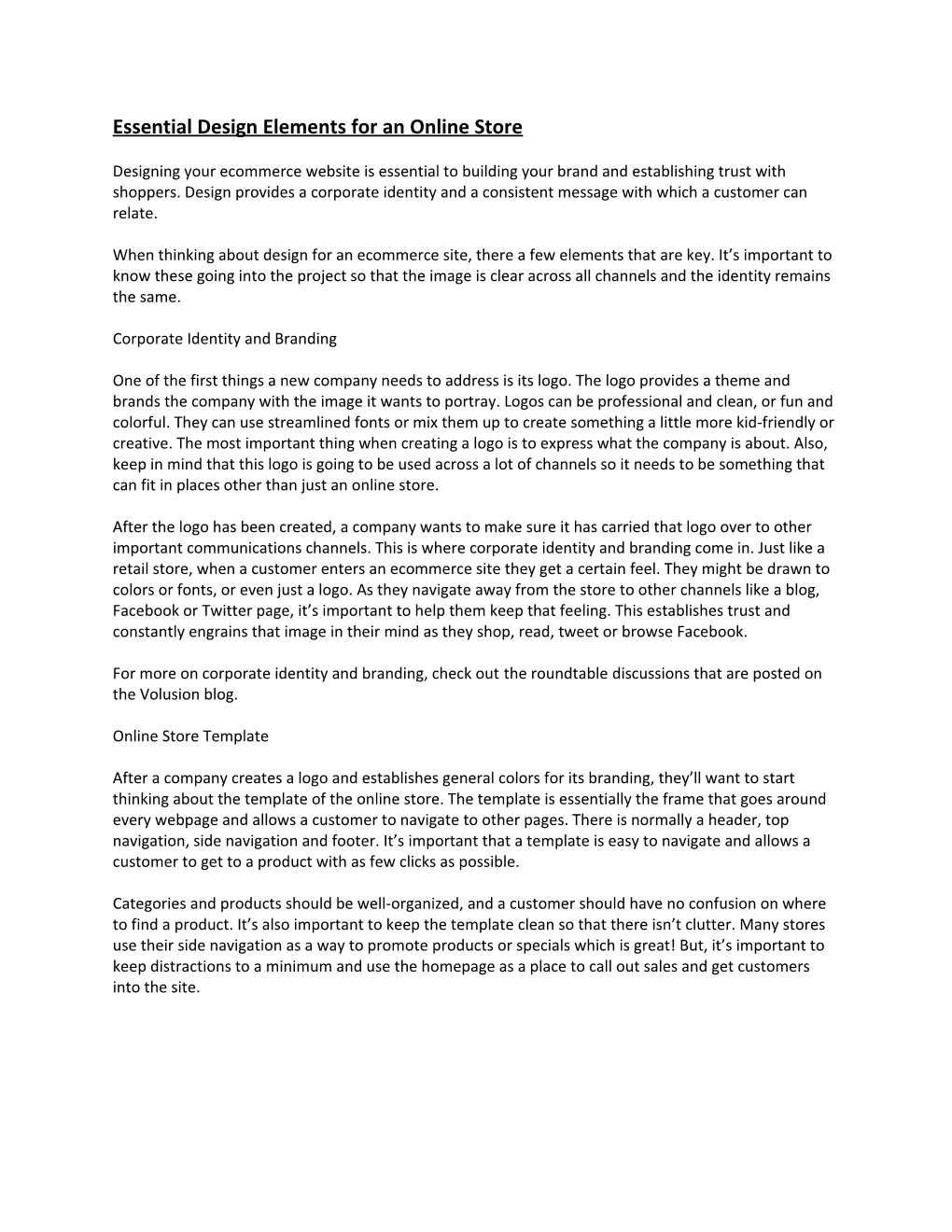Essential Design Elements for an Online Store
Designing your ecommerce website is essential to building your brand and establishing trust with shoppers. Design provides a corporate identity and a consistent message with which a customer can relate.
When thinking about design for an ecommerce site, there a few elements that are key. It’s important to know these going into the project so that the image is clear across all channels and the identity remains the same.
Corporate Identity and Branding
One of the first things a new company needs to address is its logo. The logo provides a theme and brands the company with the image it wants to portray. Logos can be professional and clean, or fun and colorful. They can use streamlined fonts or mix them up to create something a little more kid-friendly or creative. The most important thing when creating a logo is to express what the company is about. Also, keep in mind that this logo is going to be used across a lot of channels so it needs to be something that can fit in places other than just an online store.
After the logo has been created, a company wants to make sure it has carried that logo over to other important communications channels. This is where corporate identity and branding come in. Just like a retail store, when a customer enters an ecommerce site they get a certain feel. They might be drawn to colors or fonts, or even just a logo. As they navigate away from the store to other channels like a blog, Facebook or Twitter page, it’s important to help them keep that feeling. This establishes trust and constantly engrains that image in their mind as they shop, read, tweet or browse Facebook.
For more on corporate identity and branding, check out the roundtable discussions that are posted on the Volusion blog.
Online Store Template
After a company creates a logo and establishes general colors for its branding, they’ll want to start thinking about the template of the online store. The template is essentially the frame that goes around every webpage and allows a customer to navigate to other pages. There is normally a header, top navigation, side navigation and footer. It’s important that a template is easy to navigate and allows a customer to get to a product with as few clicks as possible.
Categories and products should be well-organized, and a customer should have no confusion on where to find a product. It’s also important to keep the template clean so that there isn’t clutter. Many stores use their side navigation as a way to promote products or specials which is great! But, it’s important to keep distractions to a minimum and use the homepage as a place to call out sales and get customers into the site.
Online Store Homepage
The homepage of an online store can make or break sales. The most important feature of a homepage is call-to-action features. A call-to-action tells shoppers what to do next, and is usually represented by graphics that say something about a sale, special items or new products.
Many stores utilize JavaScript or Flash on their homepage to really grab the customers’ attention. The point of these features is to make a person click into the store with as few steps as possible. One example includes taking them directly to a product or category so they can buy immediately. In essence, call-to-action features will generate more sales and lead to a better experience for the customer in the end.
There are many elements that go into an online store design. Product images are important, the way the product page is laid out makes a difference, and the buttons that customers can push throughout the site need to be clear.
To learn more about the other elements involved in the design of an online store, watch the roundtable discussions with professional designers posted on the Volusion blog. The bottom line is this: if a new store can start with a great logo and establish its identity, create a template that is easy to navigate, and provide call-to-action features on the homepage,they’re already off to a great start.
